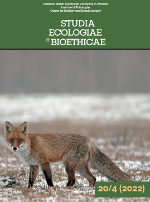Microplastic in the Soil Environment – Classification and Sources in Relation to Research Conducted in Poland
Microplastic in the Soil Environment – Classification and Sources in Relation to Research Conducted in Poland
Author(s): Monika Kisiel, Agnieszka Poniatowska, Anita KaliszewiczSubject(s): Energy and Environmental Studies, Environmental and Energy policy
Published by: Wydawnictwo Naukowe Uniwersytetu Kardynała Stefana Wyszyńskiego w Warszawie
Keywords: polymers;microplastics;soils;Poland
Summary/Abstract: In less than a century, plastics have gained enormous popularity and it is now difficult for us to imagine our lives without them. They are very widely used in industry, agriculture, medicine and many others, mainly due to their stability and low production costs - which contribute to a steady increase in demand worldwide. They biodegrade very slowly, and the limited and inappropriate recovery of this raw material from waste has led to a visible accumulation of residual polymers in the environment. As a result of physical, chemical and biological processes, e.g., ultraviolet (UV) radiation, weathering or mechanical abrasion, plastics degrade to fine particles - those less than 5 mm in size are called microplastics. They can be found in the natural environment in various morphological forms, e.g., as fibres, granules, scraps, spheres, particles or fragments, e.g., film, of primary or secondary origin. The presence of microplastics has been found all over the world, in all environments. Only recently has there been a broader focus on microplastics, which includes terrestrial systems where soils are an important part of the environment potentially exposed to contamination. Their main source in soils may be within agriculture (where composts, organic fertilizers, sewage sludge and mulching, as well as irrigation are used) plus transport, landfills and the deposition of atmospheric pollutants.
Journal: Studia Ecologiae et Bioethicae
- Issue Year: 20/2022
- Issue No: 4
- Page Range: 51-61
- Page Count: 11
- Language: English

